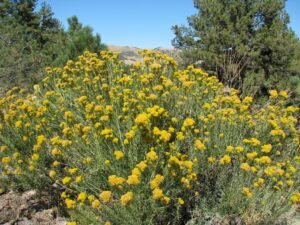Last Call
As fall color, the caution-yellow flowers of rabbitbrush tend to flare early. They bloomed here, this year, weeks before the aspen or the scrub oak got around to changing. As a wildflower, though, rabbitbrush blooms late, which is why plantswoman Lauren Springer Ogden refers to it as the “last bar open”: a destination where insects gather for one final slug of nectar before the season shuts down (my thanks to Susan J. Tweit for the reference).
Both rubber and Douglas rabbitbrush thrive in this area. The latter is smaller and easily identified by its twisted leaves. The larger rubber, or gray, rabbitbrush (Chrysothamnus nauseosis) is also known in Spanish as chamisa. The plants are considered undesirable by ranchers, but they’re browsed by deer, rabbits, and pronghorn, and the seeds are a food source for overwintering birds. Native tribes used branches from the plants in tanning hides and as coverings for sweat lodges, and boiled the flowers for yellow dye. Given that accounts I’ve read say that the flower clusters have to be boiled for six hours, making the dye bath over an open fire would have been an enormous commitment. Modern weavers and fiber artists still use yarns tinted with chamisa.
There’s a magnificent gray rabbitbrush sprawling at the southwest corner of our septic field. It took root in this fortuitous spot not long after the area was excavated, so it’s no more than 19 years old. I feel safe in surmising that its roots have found the leach field, since the plant has grown to over five feet high in that time—a whopper for this altitude. This particular shrub is far wider than it is tall, its branching crooked, crazy, and fractured from mule deer bucks rubbing their antlers on the tough and woody stems—some of which are now as thick as small trees.
In late September, I went out with the camera on a sunny morning, late enough that the crisp chill of fall had burned off under a crystalline sky. I was still in my bathrobe, but the nectar bar was in full swing. For thirty minutes I stood at that one plant, watching, listening to the hum and buzz, and taking pictures. It was the busiest gathering I’ve attended in years.
If you’re entomologically inclined, or just want to break out the field guide and practice identification, please feel free to put names to any of these barflys (haha, yes, I know most of them aren’t flies…but a couple of them are) in the comments. I’ve numbered the photos so we all can keep track.
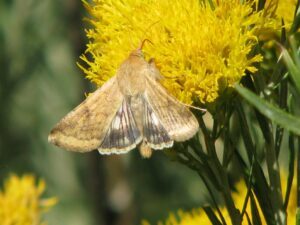
1
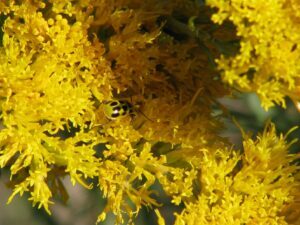
2
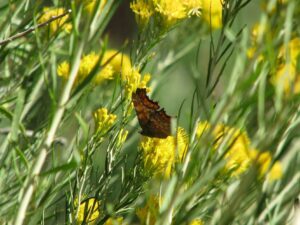
3 Anybody else see a white comma marking on the wing?
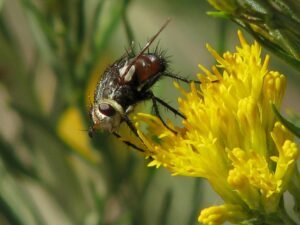
4
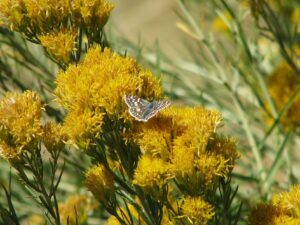
5
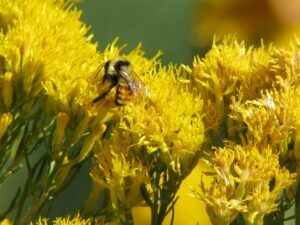
6
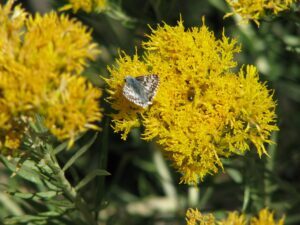
7 Correct me if I’m wrong: male checkered skipper?
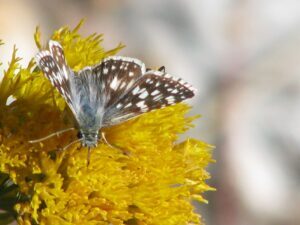
8 Correct me if I’m wrong: female checkered skipper?
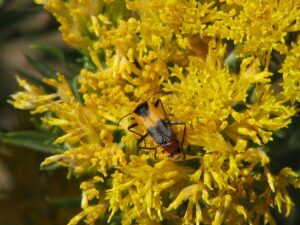
9
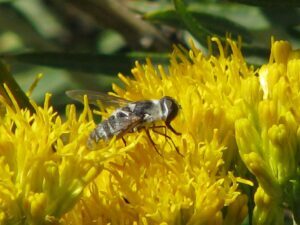
10
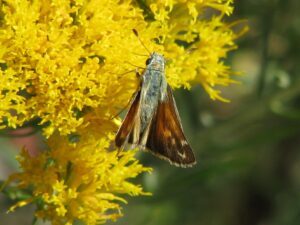
11
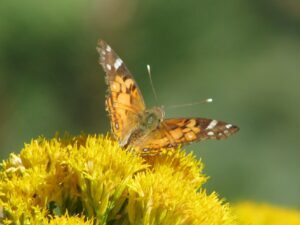
12
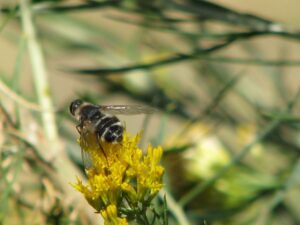
13
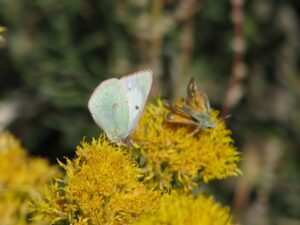
14 clouded sulfur (left) and ??
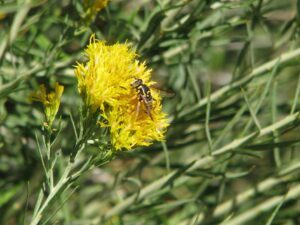
15
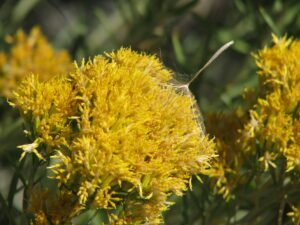
16 Okay, that’s not an insect, but even the western salsify seed wants to hang with the rabbitbrush.

